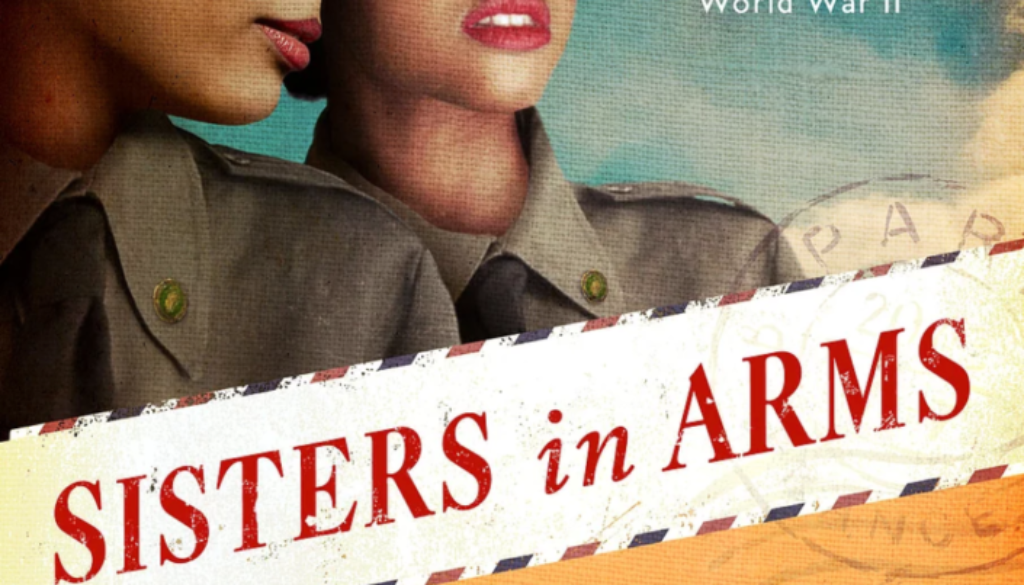Book Review: Sisters in Arms Shakes Up World War II Narratives
Kaia Alderson’s debut novel Sisters in Arms blends fictionalization with army archive research to tell the story of the African American women who fought in the 6888th Batallion. These women fought racism, misogyny, and the Nazis, and their story is long overdue for historical and literary attention. Alderson’s writing and perspective effortlessly subvert many of the tired tropes of WWII historical fiction while remaining focused on highlighting hidden history.
The 6888th Divison of the Women’s Army Auxillary Corps was formed after Mary McLeod Bethune and other civil rights leaders fought to allow Black women to enlist. Once their training was complete, the 6888th Central Postal Directory Batallion was deployed to the UK and France to assist in clearing several warehouses filled with undeliverable mail from relatives in America to soldiers on the front lines. There were thousands of men nicknamed “Johnny”, and many packages contained undeliverable gifts and food. Although this assignment does not sound as glamorous as what the Tuskeegee Airmen and other Black male units were assigned to do, delivering those Christmas cards and greetings from Grandma was a powerful boost to troop morale. The women of the 6888th were still vulnerable to air raids, workplace injuries, and more.
Sisters in Arms tells the story of the unit through the eyes of two young recruits from Harlem. Grace Steele and Eliza Jones are fictional characters but they are a composite of several real people who served in the unit. Failures and setbacks in their careers plus family conflict move both to enlist. Both of them also realize this opportunity was precious as only 40 Black women were accepted and any serious failure could possibly mean the end of the entire program. Their training camp in Iowa is fully segregated, adding to the culture shock for Steele and Jones adjusting to military life. Major Charity Adams, their commanding officer, is directly based on the real person. Steele and Jones start out as antagonists to each other. Hard times during training build camaraderie and mutual trust. Although the narration is in the third person to distinguish character perspectives, Alderson’s narrative remains relatable to the reader.
I could not help but feel inspired to persevere in my own battles as I read how Steele and Jones faced micro and macro aggressions, harassment from racists and sexists, and career struggles throughout the novel. Without giving away too many spoilers, there is a positive ending to the story. There is considerable personal growth to match career growth. Even though romance is not the main driver of the plot, there is hope in that department as well.
I wish I learned about the 6888th Batallion before receiving the ARC. Alderson harnesses the power of reclaiming space in historical narratives to the fullest advantage from start to finish. It may be far too soon to talk about a TV or film adaptation of Sisters in Arms, however, Steele and Jones’ story would fill a massive hole in representation. Although I enjoyed World War II dramas in the past few years such as Home Fires, Atlantic Crossing, The Halcyon, and World on Fire, all four shows lack either African American women main characters and/or women who were active duty overseas. Recent movies such as Dunkirk also suffer from a lack of Black main characters. While Red Tails places the service of African Americans in the frame, the story of the Tuskeegee Airmen is often the only story we see. The 6888th Central Postal Directory Batallion deserves its chance to shine in the spotlight.
I highly recommend Sisters in Arms for anyone interested in historical fiction, underrepresented Black history, or World War II history. Order your copy here, which I do not receive any ad money for linking to.
Book reviews are not the main focus for the TV/film review editors I pitch to, but if you are a BlPOC historical fiction/historical romance author and want to send me an ARC, contact me at info at amandaraeprescott dot com.

